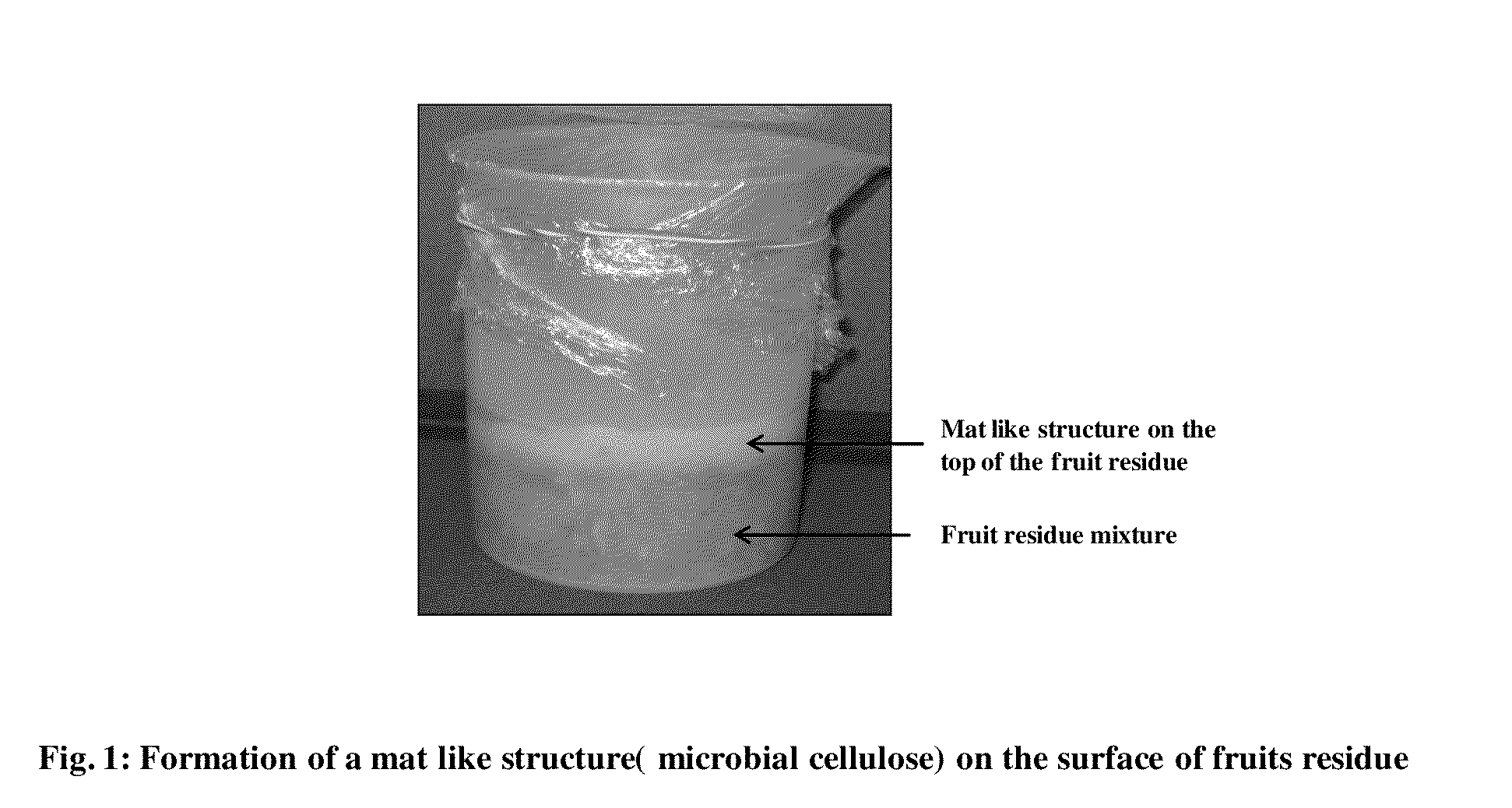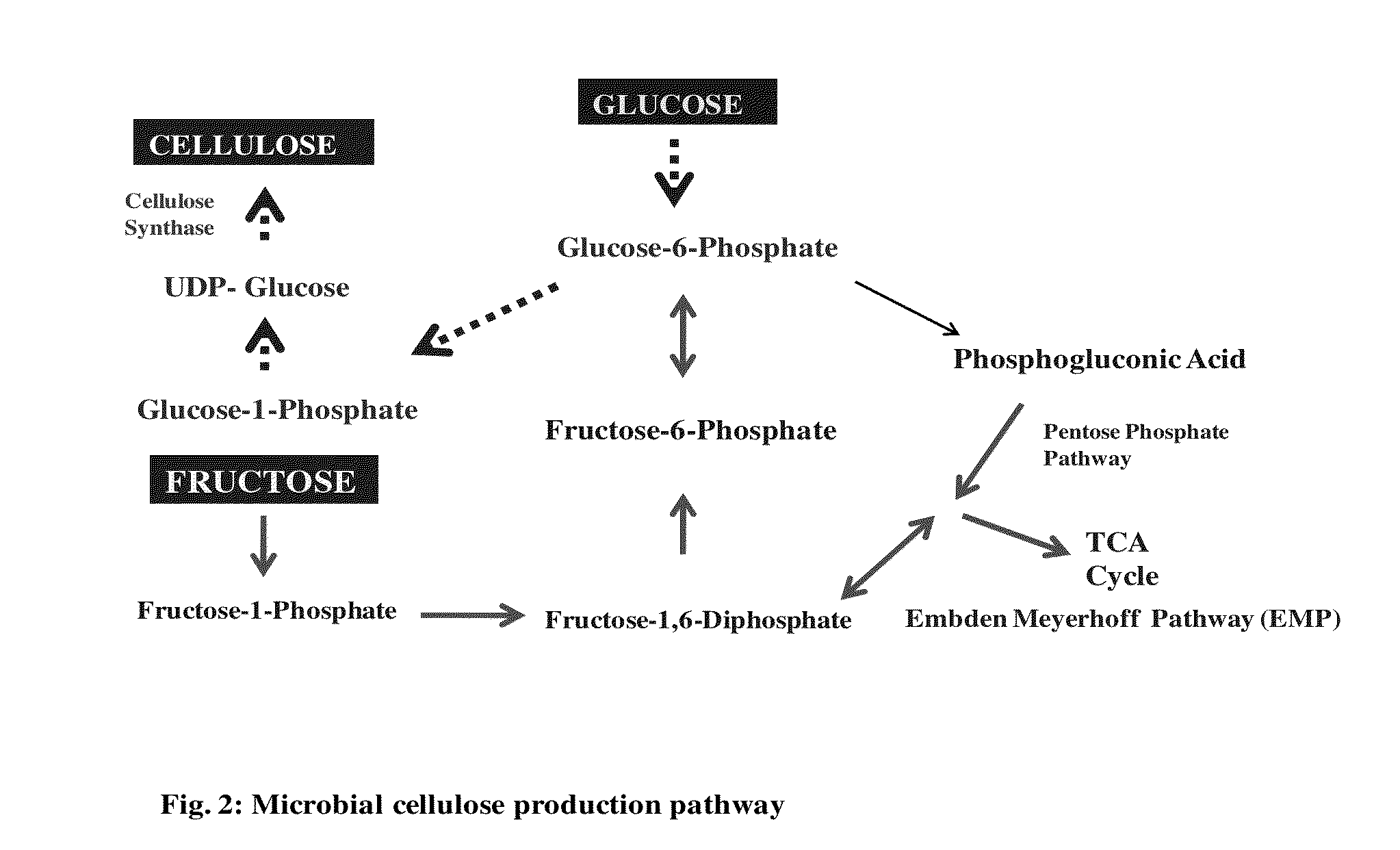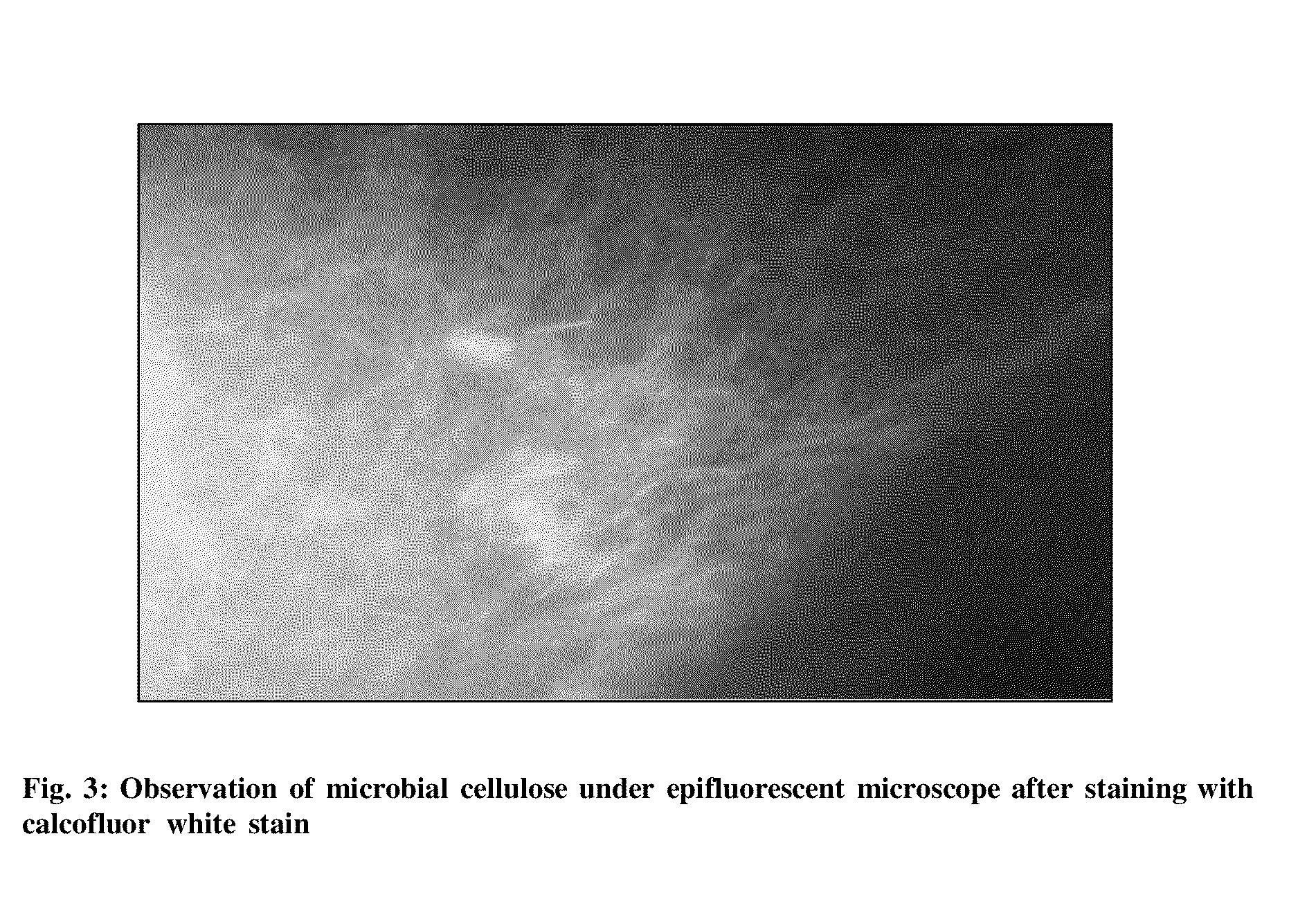Novel isolated bacterial strain of gluconacetobacter oboediens and an optimized economic process for microbial cellulose production therefrom
a technology of gluconacetobacter oboediens and economic process, which is applied in the field of new isolated bacterial strains of gluconacetobacter oboediens and an optimized economic process for microbial cellulose production therefrom, can solve the problems of limiting application, reducing land holdings for agriculture and other environmental concerns, and inability to sustain an increasing demand for cellulose. the effect of cos
- Summary
- Abstract
- Description
- Claims
- Application Information
AI Technical Summary
Benefits of technology
Problems solved by technology
Method used
Image
Examples
example 1
Isolation of Cellulose Producer / s from Fruit Residues
[0071]The isolation of cellulose producer / s was carried out using six different fruit residues (apple, pineapple, orange, sweet lime, pomegranate and mixed). Here, each fruit residue was mixed with sugar and water in the ratio of 1:0.2:3, respectively. The mixture was kept in a wide mouthed plastic container and covered with a piece of cloth. The container was kept at temperature of 30 degree C. for 10 days undisturbed and observed for MC production. After 10 days, it was observed that at the top of the pineapple, orange, sweetlime and mixed fruit residue mixtures, a mat like structure was deposited. This mat like structure was analyzed for the presence of cellulose fibrils by calcofluor staining and electron microscopy. The results showed that the mat like structure was composed of a network of ultrafine cellulose fibrils and it also contained rod shaped bacterial cells producing cellulose [FIGS. 1, 3&4].
example 2
Screening of the Bacterial Isolates Obtained from Fruit Residues for Microbial Cellulose Production
[0072]All the isolates obtained from different fruit residues were evaluated for their potential to produce microbial cellulose. These isolates were inoculated individually in 250 ml Erlenmeyer flasks containing 50 ml cellulose production medium (Hestrin-Schramm medium) containing (g / l) glucose, 20; peptone, 5; yeast extract, 5; disodium hydrogen phosphate, 2.7 and citric acid, 1.15; and incubated for 15 days at 30 degree C. under static conditions for cellulose production. A compact mat was formed on the air-liquid interface of the medium by all the isolates. The mat was removed from the medium and examined for the presence of cellulose fibrils by calcoflour staining and SEM observation [FIGS. 3 & 4]. The mat was found to be composed of cellulose fibrils. The isolate obtained from the mixed fruit residue was found to be the most potent cellulose producer producing maximum microbial ce...
example 3
Air Drying (Drying at Room Temperature) of Microbial Cellulose
[0073]The air drying method of microbial cellulose has one drawback i.e it sticks to the base on which it is kept for drying and it becomes difficult to recover it. For solving this problem, two bases were discovered and used for the air drying of the microbial cellulose mats. These were: a wooden plank and a porous fabric. The wet mats of purified microbial cellulose were placed on these two bases and left for 45 hours at a temperature of 35 degree C. After this time period, the mats were fully dried. It was observed that the mats did not sticked on the bases used and were easily recovered [FIG. 5].
[0074]The reason behind the success of these two bases is that both the materials are porous and the air passes through them, while in all the other cases where the mat sticks on the base, a vacuum is created because the bases used were not porous but rigid and do not allow any air to pass through them. Therefore, the microbia...
PUM
 Login to View More
Login to View More Abstract
Description
Claims
Application Information
 Login to View More
Login to View More - R&D
- Intellectual Property
- Life Sciences
- Materials
- Tech Scout
- Unparalleled Data Quality
- Higher Quality Content
- 60% Fewer Hallucinations
Browse by: Latest US Patents, China's latest patents, Technical Efficacy Thesaurus, Application Domain, Technology Topic, Popular Technical Reports.
© 2025 PatSnap. All rights reserved.Legal|Privacy policy|Modern Slavery Act Transparency Statement|Sitemap|About US| Contact US: help@patsnap.com



